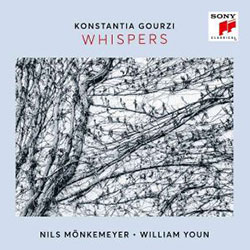melodies from the sea
op. 86, 2020
I. wave
II. turtle
III. iceberg
IV. clouds
V. whale
VI. reflections
VII. lighthouse
Duo for viola and piano (with small percussions)
Duration: ca. 21 min.
CD recording for Sony classical, July 2020 in the studio of the Bavarian Radio, Munich
Viola: Nils Mönkemeyer, Piano: William Youn
Composer’s Notes
melodies from the sea belongs to my compositions dedicated to nature. The series is both a reflection on and an appeal for a mindful approach to nature; this has always shown us the way to live together.
As a child in Greece, I experienced the beauty and the power of the sea. I love the sea and it has great significance in my life. The largest part of the earth consists of water; it can be destructive, and also beautiful. Often, I stay for hours on the seashore to hear its sound, to observe it, to learn about its infinite life and timeless beauty.
Like my other works dedicated to nature, the seven miniatures of melodies from the sea carry out their dramaturgical sequence in the form of a hypothetical musical dialogue with people. They are a statement or a narration of observations about nature. All sound motifs, rhythms, tempi and timbres follow the intensity of these thoughts.
Each of the seven miniatures depicts the tonal world of a silent moment of observation. These observations are about the sea and remind human beings of the need to be attentive and responsible towards it. Through our carelessness, the waves dump garbage on the beach, sea turtles are washed up lifeless, icebergs melt, and whales lose more and more of their orientation in the ocean. How do we reflect, and where is there a musical lighthouse to bring us humans out of this circle of destruction?
The seven miniatures are composed as a whole, like a work with seven movements. Each miniature develops its own sonic and dramaturgical world, in which each soloist either acts and reacts together with, or independently of, the other. This attentiveness often produces unexpected sounds. Sometimes the violist has the freedom to decide on the time of his playing. This creates a spontaneous, well-composed tonal coexistence, which serves the same musical arc every time. As a duo, both soloists have the same interpretive level of tonal responsibility: each accompanies the other, in a lasting process of tonal development and energy.

Photo: Norbert Banik
Audio Sample
Score
CD

Whispers
Nils Mönkemeyer, viola
William Youn, piano
Konstantia Gourz: small percussion
SONY 10776587
